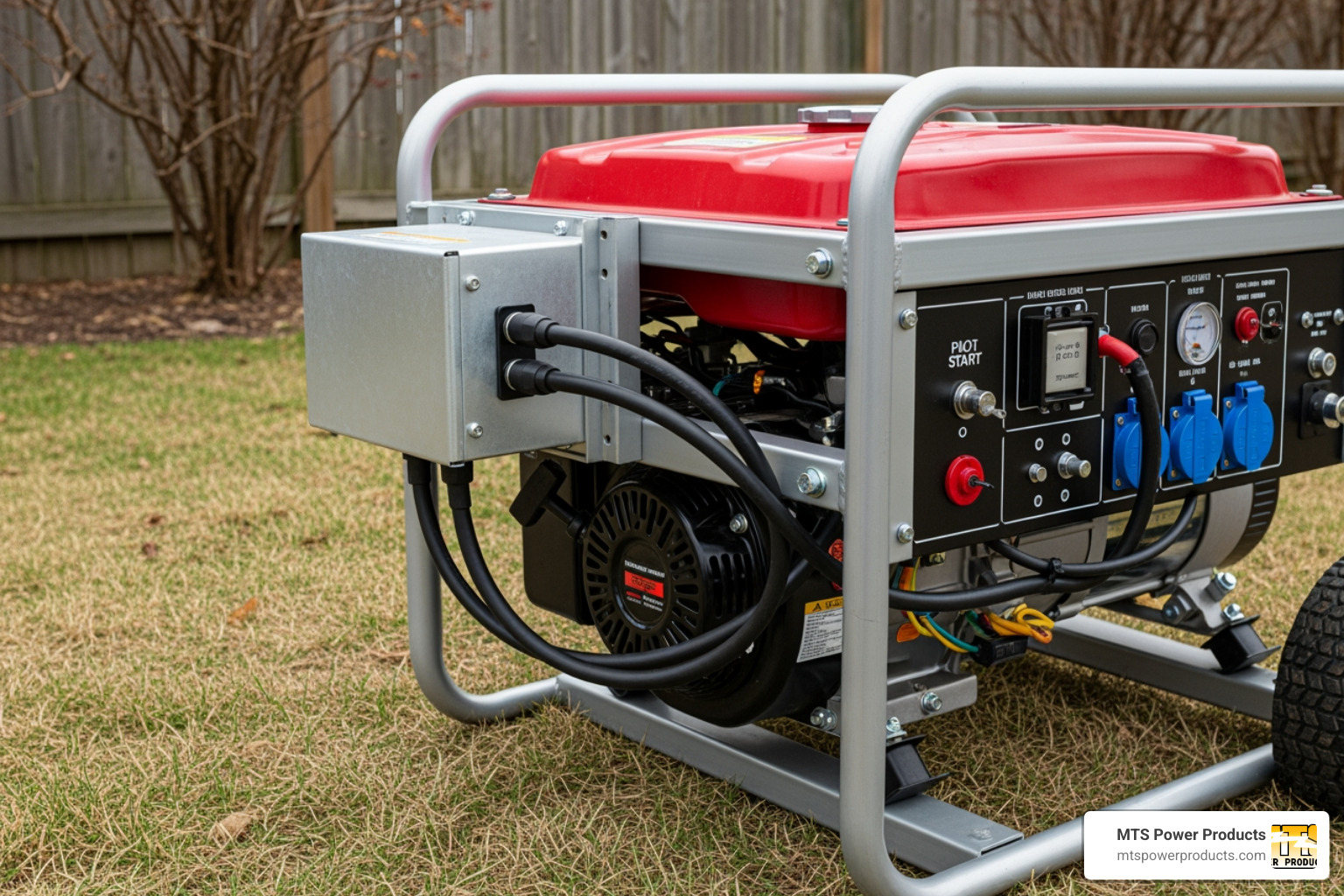
Buy Direct
from the Manufacturer
Sell our Products
Become a Distributor
Discounts
on volume purchases
Visit Us
at our Miami office
from the Manufacturer
Become a Distributor
on volume purchases
at our Miami office
An external avr for generator is a voltage regulation device that mounts outside your generator to automatically maintain stable output voltage under varying loads, protecting your electronics from damaging power fluctuations.
Quick Installation Overview:
Flickering lights or concerns about your electronics when running on backup power are signs of unstable generator voltage. Most conventional generators produce power that fluctuates as loads change, such as when an air conditioner kicks on. These voltage swings can damage sensitive electronics, shorten the life of appliances, and create safety hazards.
An Automatic Voltage Regulator (AVR) is the solution. While many generators have internal AVRs, an external unit offers superior accessibility, easier maintenance, and the ability to upgrade your generator’s performance. For anyone needing to minimize downtime or prepare for storm season, an external AVR provides crucial peace of mind and protection.
This guide will walk you through everything you need to know about external AVRs—from choosing the right model to installation, ensuring your generator delivers the clean, stable power your home or business depends on.
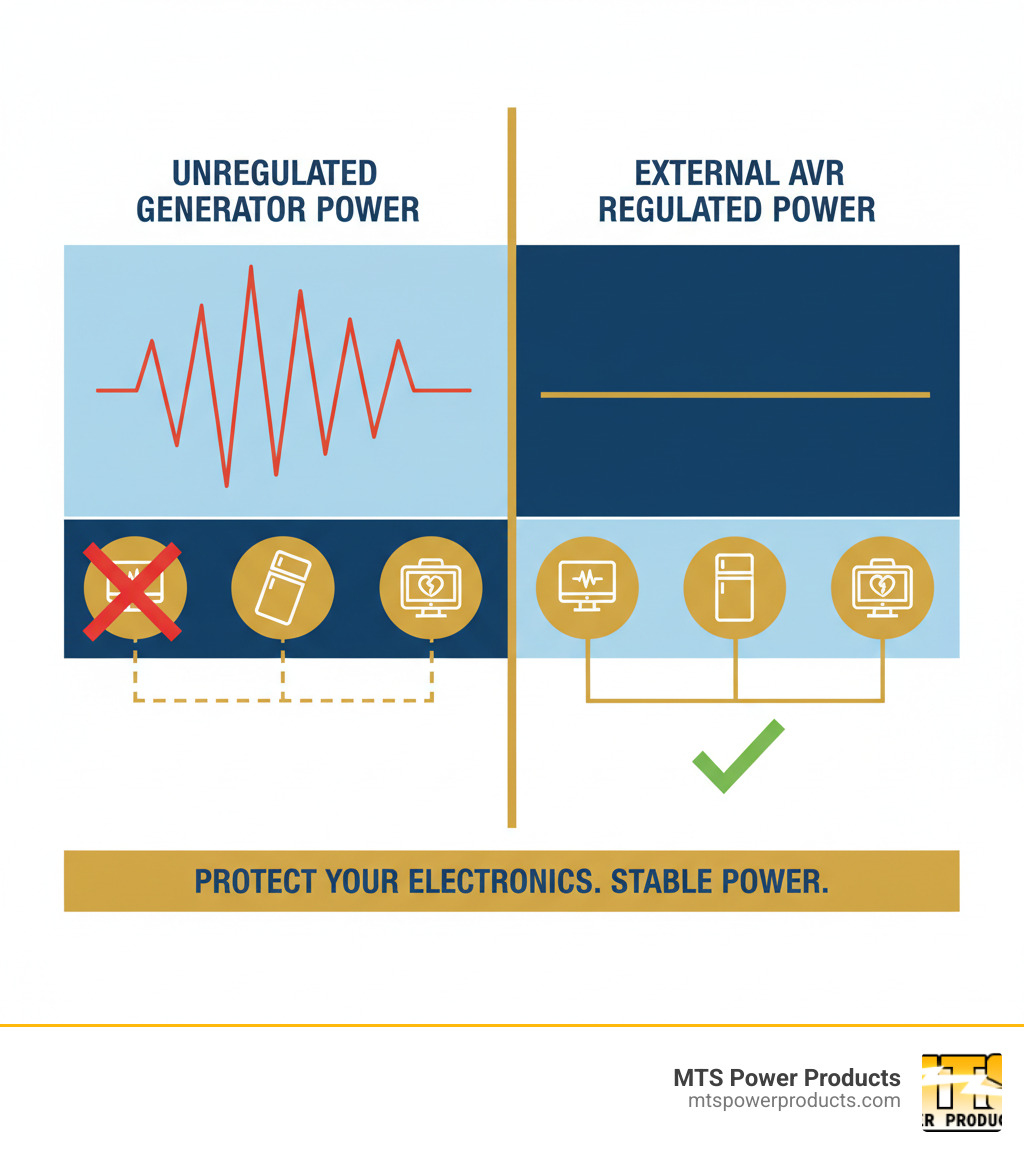
External avr for generator basics:
An Automatic Voltage Regulator (AVR) acts like a cruise control for your generator’s electricity, keeping the output voltage steady regardless of what you plug in. It constantly monitors the voltage, boosting it when a large appliance starts and reducing it when the load decreases. This automatic process prevents damaging voltage spikes and sags, protecting your equipment.
While many generators have a built-in AVR, the real question is whether it should be hidden inside or mounted externally where you can easily access it.
An internal AVR is factory-installed inside the generator, often buried within the alternator or control panel. This compact design becomes a liability when the unit fails, requiring significant disassembly to access, troubleshoot, or replace.
An external avr for generator is a separate unit mounted on the outside of the generator. This simple change in location provides significant advantages.
| Feature | Internal AVR | External AVR |
|---|---|---|
| Accessibility | Hidden inside; often requires disassembly | Mounted externally; visible and reachable |
| Ease of Installation/Replacement | Complex; may need specialized tools | Straightforward; basic hand tools |
| Upgradeability | Limited to specific models; proprietary parts | Wide compatibility; easier to upgrade |
| Environmental Protection | Exposed to engine heat and vibration | Can be positioned away from harsh conditions |
| Cost | Often expensive proprietary replacements | More competitive pricing; generic options available |
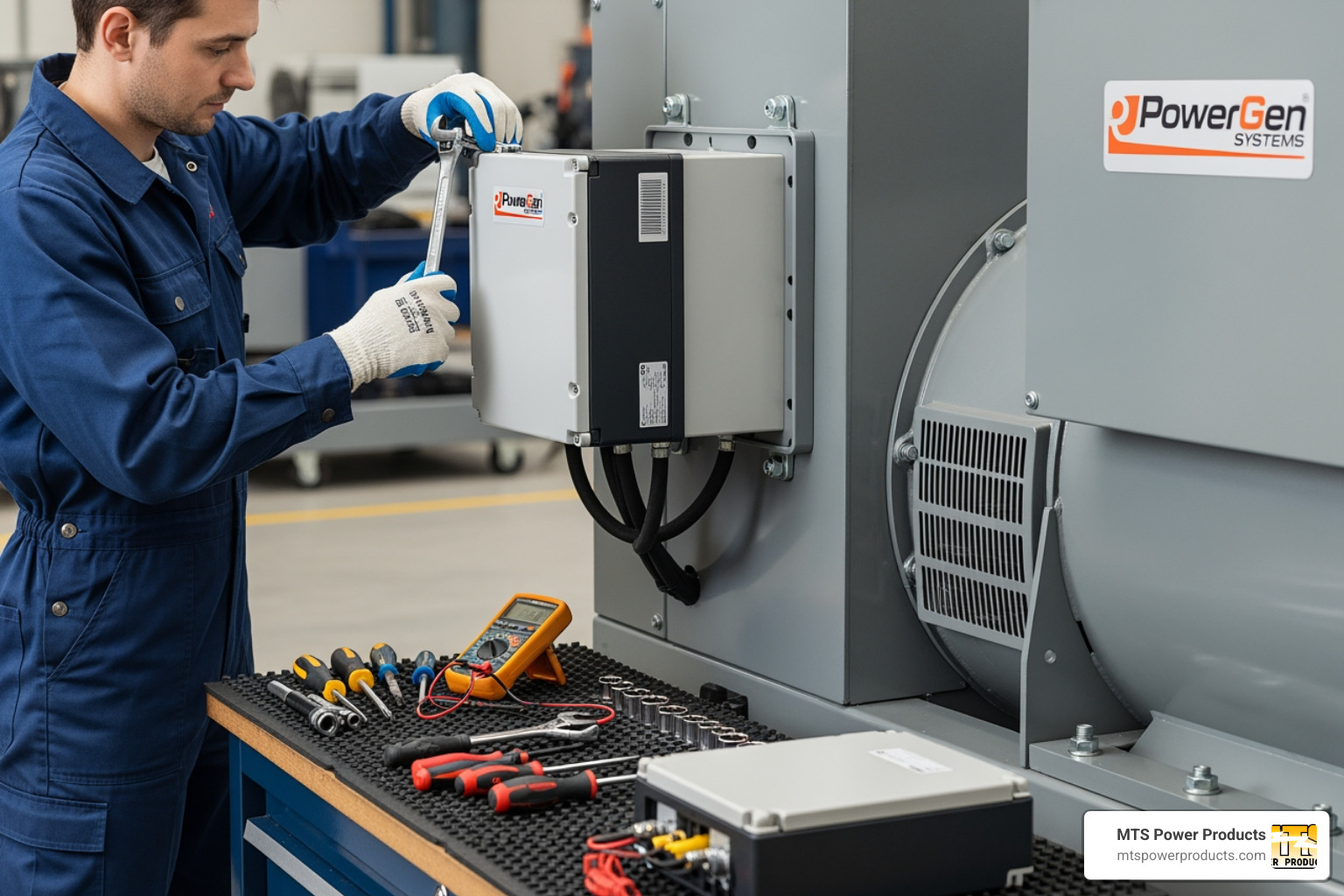
The advantages of an external avr for generator become clear during maintenance or upgrades.
For professional-grade solutions that combine accessibility with reliability, explore the range of Automatic Voltage Regulator (AVR) for Generators from McPherson Controls, designed for real-world challenges.
Selecting the right external avr for generator is crucial for safety and performance. Compatibility is key, so you must match the AVR to your generator’s specifications.
Before buying, identify your generator’s:
A quality external avr for generator includes features that ensure stable power and protect your equipment.

There is a wide variety of external avr for generator units available for nearly any generator and budget.
Universal AVR kits are flexible options for common portable gasoline generators (typically 2kW to 8kW). These come in compact, half-moon shapes or more robust rectangular box styles. Basic models like this AVR Voltage Regulator Rectifier for 2KW-3KW Gasoline Generator can be found for under $50. For larger 4kW-7.5kW units, options like this AVR Automatic Voltage Regulator on eBay typically cost between $30 and $100.
Digital AVRs offer higher precision and faster response times compared to more budget-friendly analog AVRs. They may also include advanced features like remote monitoring.
The typical cost for portable generator AVRs ranges from $20 to $150. For larger industrial units, prices can climb from $100 to several hundred dollars.
For professional-grade solutions, MTS Power Products offers a customized line of commercial and residential power controls through McPherson Controls. Explore McPherson Controls Generator Voltage Regulators for solutions that combine advanced features with high safety standards.
Installing an external avr for generator is an achievable project for those comfortable with basic electrical work. Safety is paramount: ensure the generator is completely off, cooled, and disconnected from any power source before you begin. Always consult your generator’s manual for specific wiring diagrams. Gather your tools: a multimeter, screwdrivers, wire strippers, and electrical tape or heat shrink tubing.
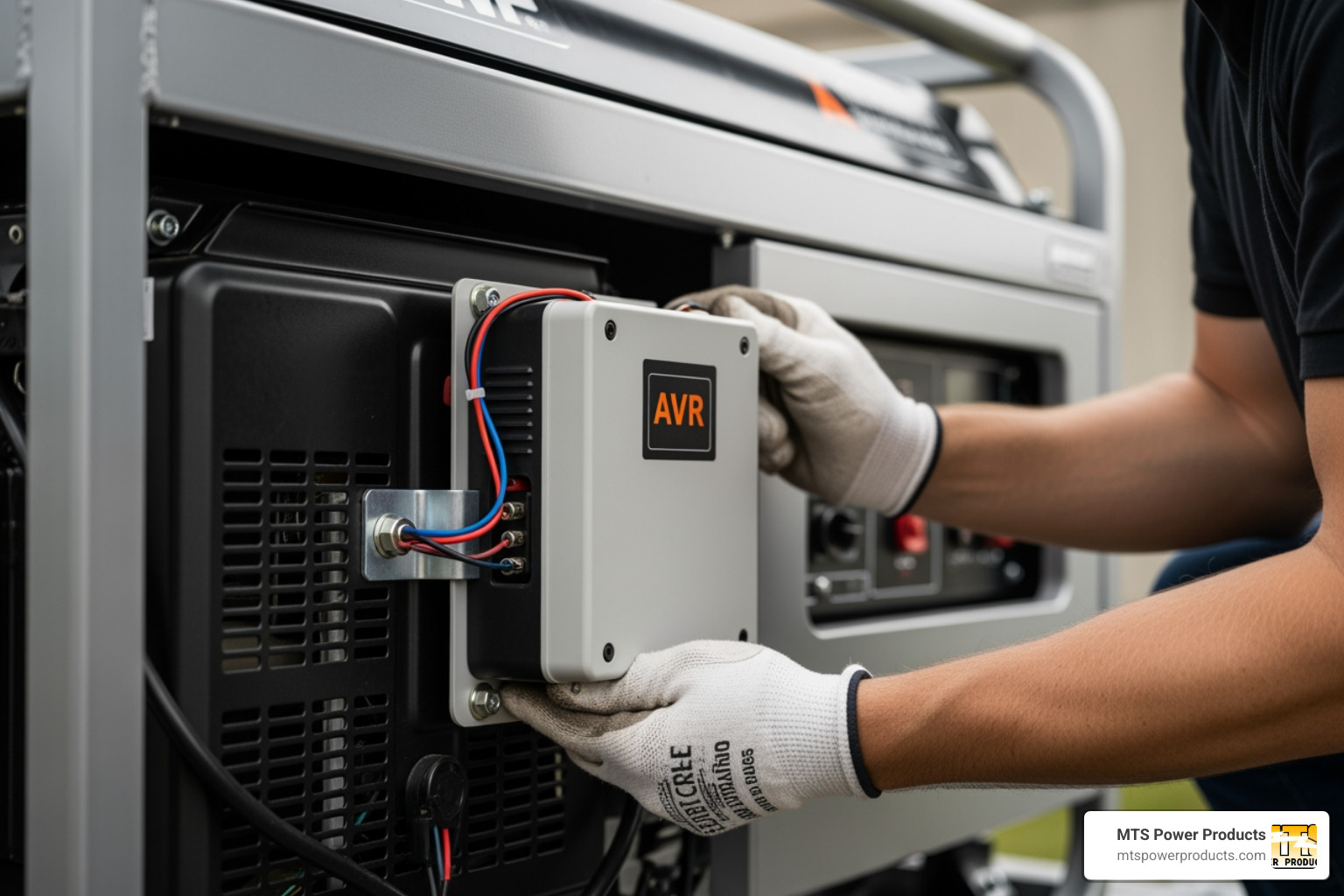
Carefully follow the wiring diagram provided with your new AVR, as terminal labels can vary. If you are uncertain at any point, consult a qualified electrician.
With wiring complete, it’s time to calibrate the unit.
An external avr for generator provides superior performance and crucial protection. It improves voltage stability, keeping output within a tight tolerance (often ±1%) to protect sensitive electronics. It also boosts the generator’s surge capacity, allowing it to handle the high-current demands of starting motors without a significant voltage drop. By preventing harsh fluctuations, an AVR reduces thermal stress on alternator windings, contributing to the longevity of your generator.
Even reliable systems can have issues. Here are solutions to common problems:
No Voltage Output:
Low Voltage Output:
High Voltage Output:
Unstable or Fluctuating Voltage:
How to Perform Field Flashing:
If you have no voltage due to lost residual magnetism, you can restore it:
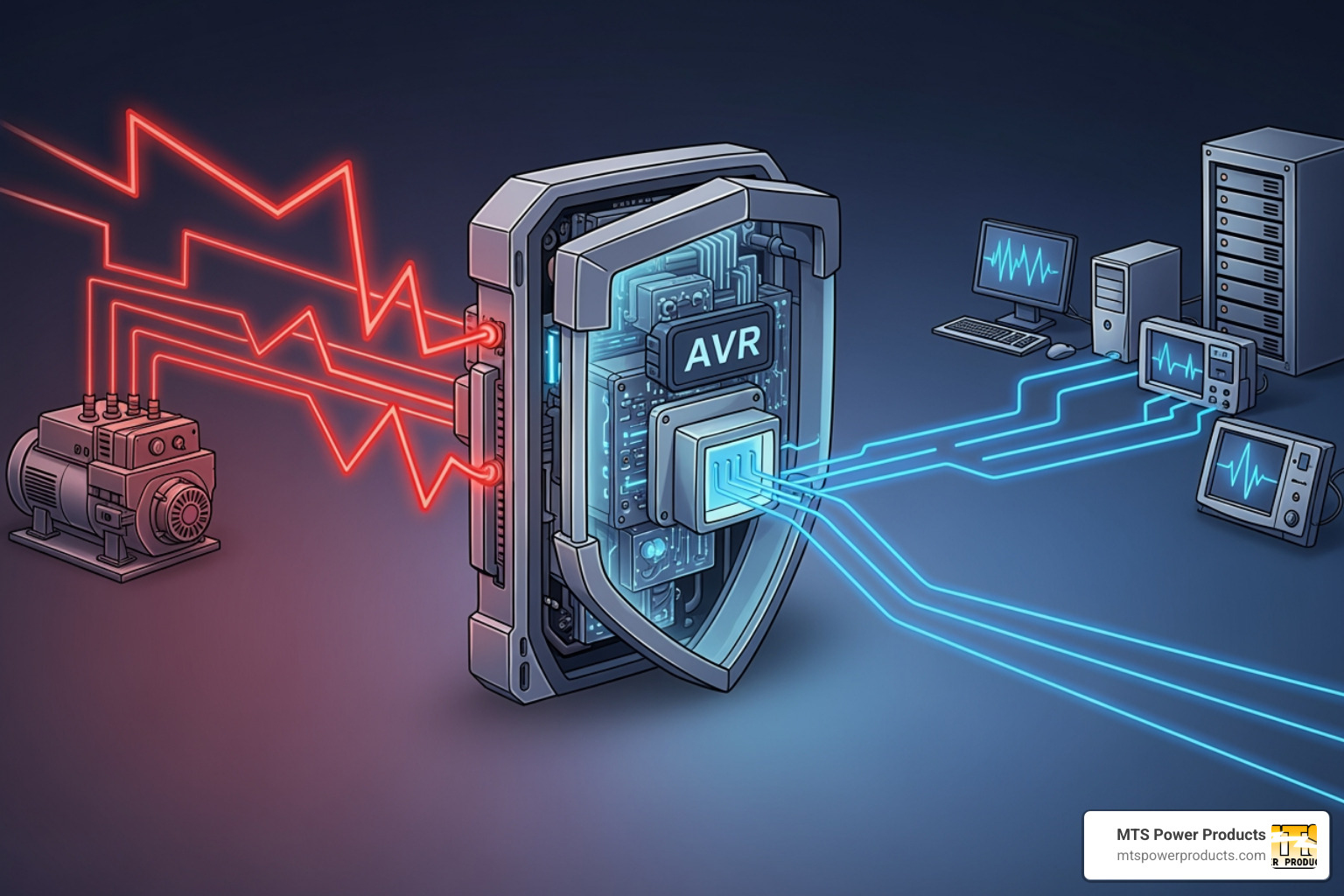
An external avr for generator acts as a shield for your valuable equipment:
An external avr for generator is an excellent upgrade for most conventional (non-inverter) generators, especially:
No. Inverter generators use a different technology to produce power. They create high-frequency AC, convert it to DC, and then invert it back to a clean AC signal electronically. They do not have the traditional alternator field winding that a standard external avr for generator is designed to control. Attempting to connect one would be ineffective and could damage both the AVR and the inverter.
An external avr for generator will significantly improve your generator’s voltage stability, but it will not make the power as “clean” as an inverter’s. An AVR excels at maintaining a consistent voltage level (e.g., ±1%), protecting against sags and surges.
However, power “cleanliness” also refers to Total Harmonic Distortion (THD), which measures the smoothness of the AC waveform. Inverter generators are specifically designed to produce very low THD power (<3%). An AVR does not alter the THD of a conventional generator. While an AVR provides a major, cost-effective improvement in power quality, an inverter generator still produces the purest power for the most sensitive electronics.
Installing an external avr for generator is a powerful step towards taking control of your generator’s power quality. You now have the knowledge to choose, install, and calibrate a unit that will transform your generator into a reliable power source. The key benefits are clear: stable power for your home or business, crucial protection for sensitive electronics, and a longer life for your equipment. It’s a cost-effective upgrade that provides peace of mind, especially in areas like South Florida where reliable backup power is essential.
At MTS Power Products, we understand the power challenges of our community because we are based right here in Miami. We are a direct source for professional-quality generators and components, including our own McPherson Controls line of advanced voltage regulators. These products are designed for the real-world demands of commercial and residential applications, offering superior control and safety.
Our central location near Miami’s airport and port allows us to serve customers worldwide, but we are dedicated to helping our neighbors ensure they are never left in the dark.
For professional-grade voltage regulators and expert advice, explore our range of McPherson Controls Generator Voltage Regulators. Our team is ready to help you find the perfect solution for your power needs.
